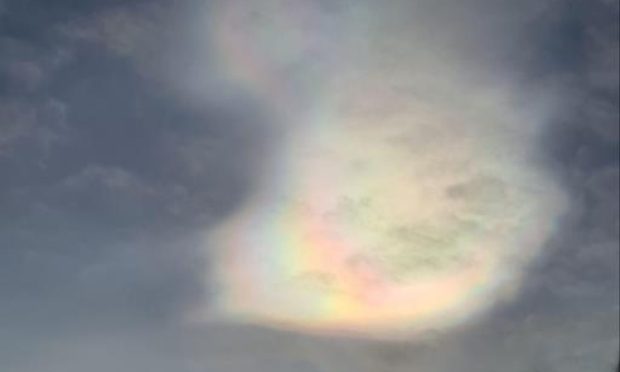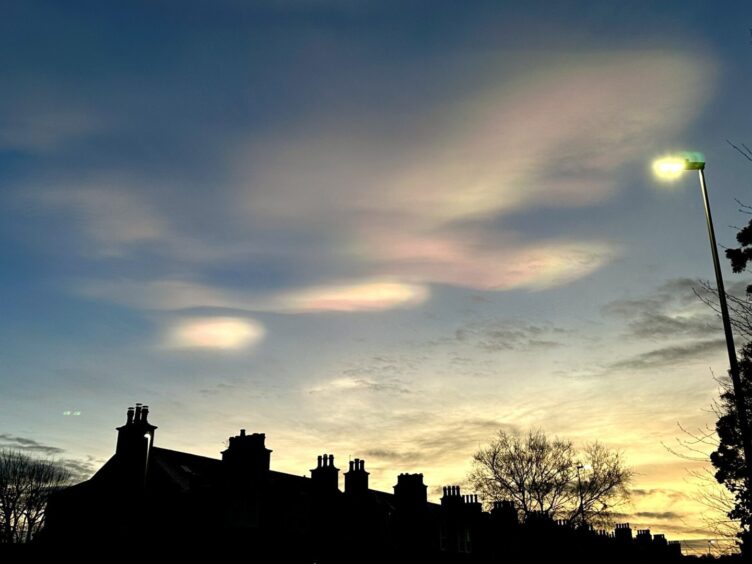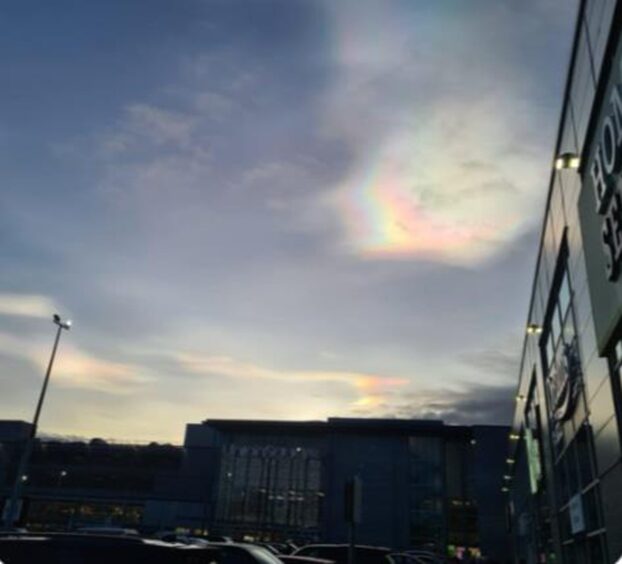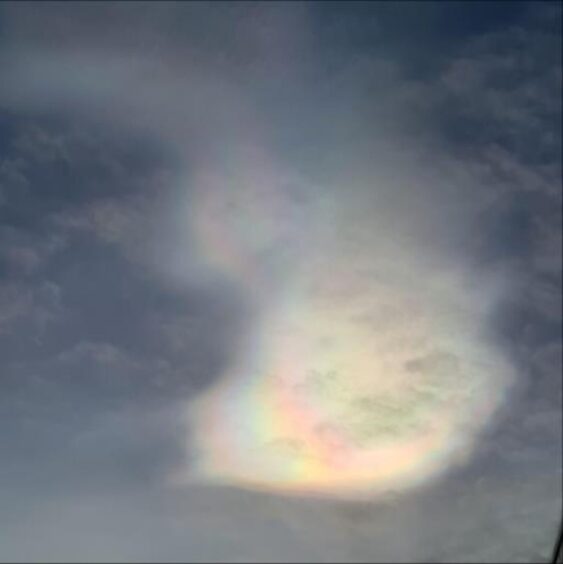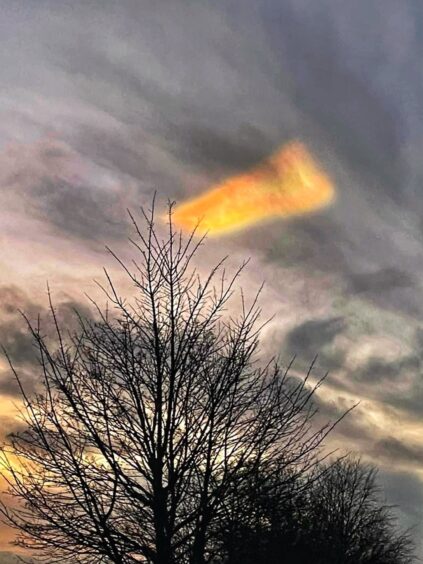Rare rainbow clouds have been spotted in Aberdeen.
Dazzled onlookers took pictures in awe this afternoon, with many uploading their snaps to social media.
The formations, which are known as nacreous clouds, are famous for their signature vivid colours.
They give off a rainbow-like appearance because they reflect a thin layer of oil on top of water, which is known as iridescence.
The clouds are said to appear alongside very cold and often dry weather.
According to the Met Office, they are “very rare and high” formations which only tend to form over polar regions when the sun is just below the horizon.
The forecaster said: “The ice particles that form nacreous clouds are much smaller than those that form more common clouds.
“These smaller particles scatter light in a different way, which is what creates the distinctive luminescent appearance.
“Due to their high altitude and the curvature of the Earth’s surface, these clouds are lit up by sunlight from below the horizon and reflect it to the ground, shining brightly well before dawn and after dusk.
“They are most likely to be viewed when the Sun is between 1º and 6º below the horizon and in places with higher latitudes, such as Scandinavia and northern Canada.
“For this reason, they are sometimes known as polar stratospheric clouds.
“Nacreous clouds only form below -78 °C so are most likely to occur during the polar winter.
“Because of the very low temperatures required, nacreous clouds are usually only visible from the UK when the cold air which circulates around polar regions in the stratosphere is displaced and hovers temporarily over the UK.”
Nacreous clouds ‘destroying the ozone layer’
Despite their beauty, nacreous clouds – often dubbed “mother of pearls” – have been described as “harbingers of doom”.
Eddy “Weather” Graham, an award-winning researcher and lecturer at the Lews Castle College UHI, once said: “They may look beautiful but some of them are actually destroying the ozone layer.
“It’s complex chemistry, but the beauty is actually having a destructive effect.
“They’re a real harbinger of doom. Maybe one of the reasons we are seeing more of them is we are having an increasingly greater impact on the environment.”
A Nasa blog adds that chemical reactions within these rare cloud formations create circumstances that “destroy stratospheric ozone”.
A Nasa blog said: “Since stratospheric ozone blocks harmful, cancer-causing, solar ultraviolet radiation, the thinning of the ozone in both hemispheres threatens the health of both our environment and ourselves.”
